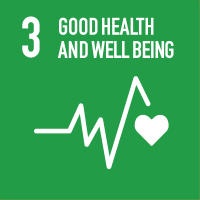Studying at the University of Verona
Here you can find information on the organisational aspects of the Programme, lecture timetables, learning activities and useful contact details for your time at the University, from enrolment to graduation.
Study Plan
The Study Plan includes all modules, teaching and learning activities that each student will need to undertake during their time at the University.
Please select your Study Plan based on your enrollment year.
1° Year
| Modules | Credits | TAF | SSD |
|---|
Professional Laboratories (1st year)
2° Year activated in the A.Y. 2023/2024
| Modules | Credits | TAF | SSD |
|---|
Professional Laboratories (2nd year)
3° Year activated in the A.Y. 2024/2025
| Modules | Credits | TAF | SSD |
|---|
Professional Laboratories (3rd year)
| Modules | Credits | TAF | SSD |
|---|
Professional Laboratories (1st year)
| Modules | Credits | TAF | SSD |
|---|
Professional Laboratories (2nd year)
| Modules | Credits | TAF | SSD |
|---|
Professional Laboratories (3rd year)
Legend | Type of training activity (TTA)
TAF (Type of Educational Activity) All courses and activities are classified into different types of educational activities, indicated by a letter.
Maternal and paediatric nursing care - PEDIATRIA (2024/2025)
Teaching code
4S000115
Teacher
Credits
1
Language
Italian
Scientific Disciplinary Sector (SSD)
MED/38 - PAEDIATRICS
Period
2 SEMESTRE PROFESSIONI SANITARIE dal Jan 7, 2025 al Sep 30, 2025.
Courses Single
Not Authorized
Program
- Growth and Psychomotor development. Diet
- Vaccination calendar in children
- Frequent infections in pediatric age and exanthemas
Clinical peculiarities, diagnostic hypotheses, and care in:
- gastroenteritis, dehydration, vomiting, abdominal pain, celiac disease
- bronchiolitis, laryngitis, epiglottitis,
- pneumonia and asthma
- Fever and febrile convulsions
- Pharmacological treatment of pain in children
- head trauma
- meningitis
- Kawasaki disease and Schonlein Henoch purpura
-Diabetes: types of diabetes, signs, symptoms, treatment. Ketoacidosis, hypoglycemia and hyperglycemia
Bibliography
Didactic methods
Lectures
Analysis of clinical scenarios
Learning assessment procedures
The exam will be a multiple choice test (16 questions) with a single correct answer, with 4 or more answer alternatives
Evaluation criteria
The exam will consist of 2 blocks (A and B). Block A consists of 2 modules/courses: GYNECOLOGY AND OBSTETRICS + OBSTETRICAL ASSISTANCE; block B is made up of 2 modules/courses: PEDIATRICS + PEDIATRIC NURSING
To pass the single block it is mandatory to obtain sufficiency in that MODULE/COURSE. To pass the exam you must pass both the blocks. The blocks can be taken individually (only A or only B) or the exam can be taken in its entirety (block A and B). During the registration phase you sign up for the exam in full. The single block passed will remain valid until 1/31/26, then it will have to be repeated if the other block is not passed. Each correct answer will be worth 0.5 points, the answer not given or incorrect will be worth 0 points.
Exam language
Italiano

